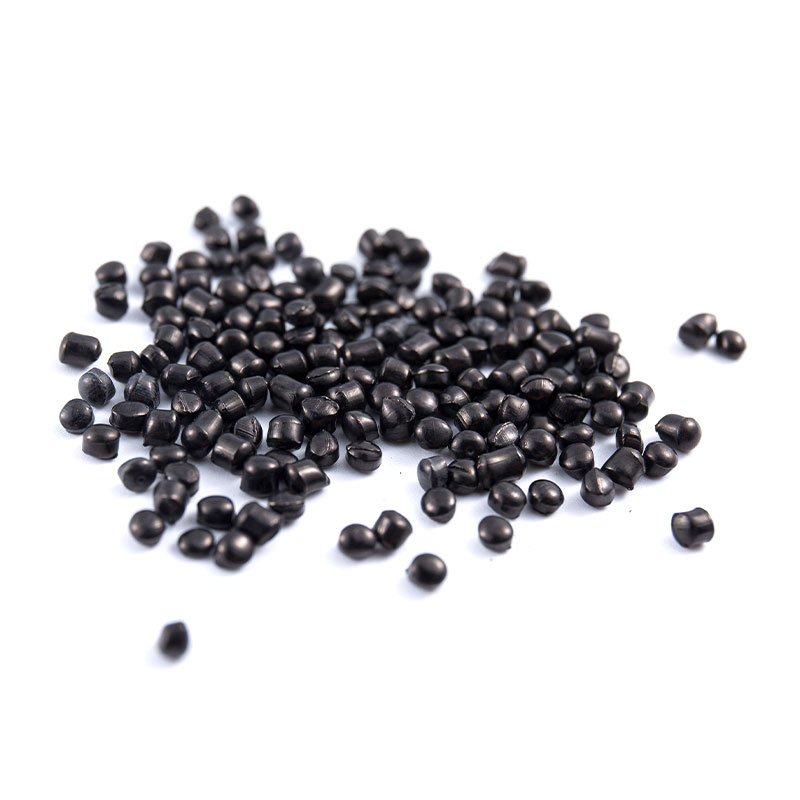Does Low-Dose Food Contact Black Masterbatch Still Provide Good Masking Effect?
Role of Food Contact Black Masterbatch in Modern Packaging
Food contact black masterbatch plays an essential role in plastic packaging applications where appearance, opacity and material safety must meet strict regulatory requirements. These masterbatches are designed for direct or indirect contact with food and beverages, meaning their formulation must follow relevant migration limits and purity standards.
In industries such as dairy packaging, coffee capsule production and microwaveable containers, manufacturers increasingly use colorants at lower dosages to minimize material cost and reduce potential migration risks. E-LUCK, drawing from its experience in controlled dispersion technology, develops black masterbatch solutions tailored for food-grade applications. While the company designs materials for various industries—from automotive parts to electronic housings—its food contact series places particular emphasis on consistent dispersion and material cleanliness, both of which directly influence the masking efficiency at low dosage levels.
Masking Effect and Its Technical Definition in Polymer Processing
The masking effect refers to the ability of the masterbatch to conceal defects, streaks, recycled content or color variations in the base polymer. For food packaging, this visual consistency contributes to brand identity and consumer confidence.When the dose is reduced, the carbon black concentration diminishes, which can lead to insufficient coverage, allowing the natural color of the polymer or fillers to become visible. The extent to which a food contact black masterbatch maintains masking capability depends on several factors, including pigment strength, dispersion fineness, carrier resin compatibility and processing conditions.
Influence of Carbon Black Characteristics on Masking Efficiency
The quality and type of carbon black selected for food-contact masterbatch have a direct impact on masking performance. Carbon black grades designed for food applications typically possess controlled purity, lower PAH levels and stable surface chemistry.
E-LUCK uses carbon black types engineered for high dispersion and consistent chromaticity, allowing the masking effect to be maintained even at reduced addition rates. Smaller primary particle sizes contribute to deeper coloration, which enhances coverage while minimizing the pigment loading needed. This becomes particularly important when manufacturers attempt to reduce dosage without compromising packaging appearance.
Dispersion Quality and Its Relationship to Low-Dose Performance
Dispersion quality is often the determining factor in whether a low-dose food contact black masterbatch can still deliver sufficient masking. If carbon black is not uniformly dispersed, small agglomerates may create uneven shading, streaking or low-opacity regions.E-LUCK’s dispersion capability is supported by equipment and processing techniques developed for high-performance applications in multiple industries. By achieving stable pigment distribution, the company’s formulations help maximize the optical effect of each particle of carbon black, enabling acceptable coverage even when dosages fall below typical levels used for standard packaging.
Importance of Carrier Resin in Food Contact Applications
Carrier resin selection is tightly linked to both regulatory compliance and masking performance. A carrier resin incompatible with the base polymer may result in phase separation, poor melt flow behavior or non-uniform pigment distribution.For food packaging applications, polyethylene and polypropylene are the most common base materials. E-LUCK adjusts its food contact black masterbatch using carriers with melt properties that match these polymers, allowing them to blend efficiently into the matrix. The improved wetting and distribution properties of compatible carriers help maintain masking levels at reduced addition percentages.
Regulatory Constraints and Their Effect on Formulation Strategies
Food contact applications must comply with FDA, EU or national standards governing allowable migration levels. These regulations influence the pigment quality and additive package used in the masterbatch.Reducing dosage can help minimize migration risk, but it must not compromise the required opacity or aesthetic stability of the final product. E-LUCK adopts a controlled formulation approach in which pigment purity and additive choices align with regulatory limitations while still providing reliable masking performance, offering manufacturers a favorable balance between safety and appearance.
Typical Dosage Ranges and Masking Performance Comparison
The masking ability of food contact black masterbatch varies according to dosage and polymer type. The table below summarizes common industrial dosage ranges and the typical masking performance levels observed:
| Dosage Range |
Packaging Application |
Typical Masking Level |
| 0.5%–1.0% |
Thin-wall injection parts |
Moderate |
| 1.0%–2.0% |
Blow-molded bottles |
High |
| 2.0%–4.0% |
Recycled-content packaging |
Higher masking requirement |
Optical Density and Its Contribution to Masking at Low Dosage
Optical density measures how effectively a material absorbs light. For black masterbatch, high optical density correlates with better masking. At lower dosages, optical density may decrease unless the pigment has sufficient tint strength or unless dispersion is optimized to maximize pigment exposure.E-LUCK evaluates optical density parameters to ensure that the carbon black interacts effectively with the polymer matrix, supporting the masking effect even when the masterbatch is used sparingly. The company’s process consistency helps maintain reproducible optical results, which is essential for large-scale packaging production.
Interaction Between Base Polymer Color and Masking Outcome
The natural color of the base polymer influences how well a low-dose food contact black masterbatch performs. Polymers with slight yellowing or containing recycled content require more tinting strength to achieve uniform opacity.In response to such challenges, E-LUCK focuses on matching the masterbatch’s optical behavior to the specific packaging scenario. When working with recycled materials, the company emphasizes improved dispersion and controlled pigment concentration to compensate for underlying color variations, helping manufacturers maintain consistent product appearance.
Melt Flow Behavior and Its Effect on Coverage in Thin-Wall Products
Thin-wall packaging products demand fast and stable melt flow to achieve complete mold filling. The melt behavior of the masterbatch influences how evenly the pigment disperses during injection or blow molding.E-LUCK develops food contact black masterbatch with controlled rheological characteristics, allowing smooth integration without affecting the base polymer’s processing window. This behavior supports uniform color distribution, which becomes vital at low dosing levels where pigment concentration is limited.
Migration Stability and Surface Appearance
Masterbatch used in food contact packaging must maintain low migration levels while providing stable surface appearance. High migration potential may alter gloss or create surface haze, affecting perceived product quality.E-LUCK incorporates additive packages that remain stable within the polymer matrix under normal processing conditions, helping maintain surface uniformity. Migration-resistant components also aid in preserving the masking effect since color uniformity is better retained when surface chemistry remains stable.
Process Optimization for Improved Masking at Low Dosage
Manufacturers can enhance masking performance through process adjustments such as melt temperature, screw configuration and mixing intensity. Even when dosage is reduced, improved processing can promote pigment dispersion and coverage.E-LUCK collaborates with downstream processors by offering technical guidance on optimizing temperature profiles and mixing conditions, especially for high-speed injection molding and extrusion processes. This collaborative approach supports more consistent appearance across large production batches, helping maintain masking at low pigment loadings.
Applications Where Low-Dose Masking Is Common
Several food-related packaging fields frequently apply reduced pigment dosage, particularly when the packaging structure is thin or when manufacturers aim to minimize cost and material use.Examples include coffee capsules, ready-meal trays and disposable cutlery. In these applications, the final visual effect must remain uniform despite reduced pigment content. E-LUCK designs masterbatch solutions to support thin-wall structural requirements where pigment exposure and distribution efficiency control the masking performance.
Comparison of Low-Dose and Standard-Dose Masking Performance
The table below presents a general comparison of performance parameters between low-dose and standard-dose applications of food contact black masterbatch:
| Performance Parameter |
Low-Dose Application |
Standard-Dose Application |
| Masking Effect |
Moderate to High (depends on dispersion) |
High |
| Material Cost |
Lower |
Higher |
| Regulatory Compliance |
Lower migration potential |
Standard |
| Optical Density |
Medium |
High |
| Appearance Consistency |
Dependent on processing |
More stable |

 English
English Español
Español












